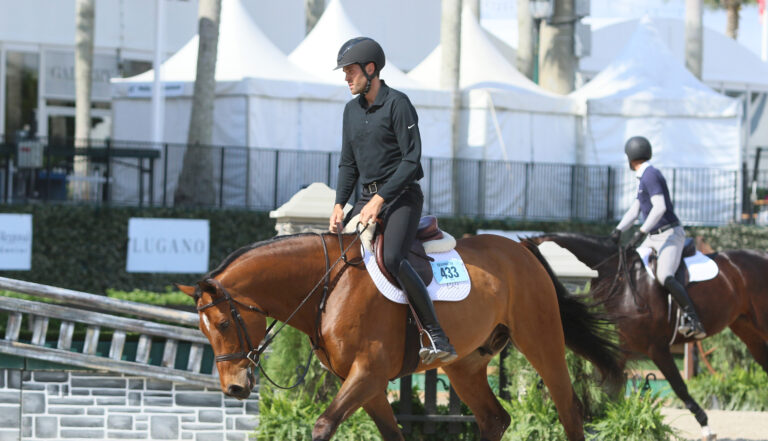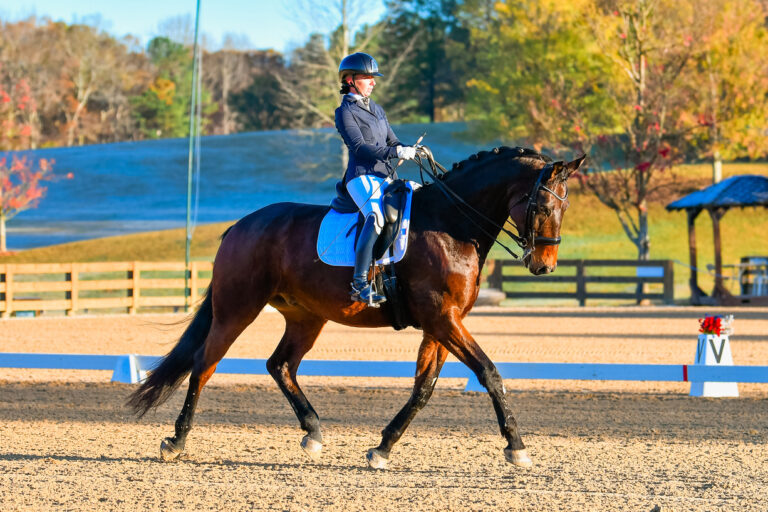It’s a given that when George Morris talks about the future of jumping, those in the know pay attention.
When you add top competitors McLain Ward and Lucy Davis from the United States, Max Amaya, originally from Argentina, and Canadian Ian Millar, along with course designers Leopoldo Palacios from Venezuela and Brazil’s Guilherme Jorge as well as the former president of the Washington Horse Show Juliet Reid into the mix to discuss topics from officials and rules to course design and the media, then you can be certain there will be some spirited conversation.
Moderated by horse show announcers Steven Wilde and Peter Doubleday, the panel, populated with a cadre of knowledgeable and experienced experts, did not disappoint as they discussed “Jumping into the Future” during the final week of the 2018 Winter Equestrian Festival in Wellington, Florida.
“I believe that sport changes lives,” said panel organizer and host Cesar Hirsch. “We really need to focus on how we develop our sport in the right way because the way the sport is headed is going to impact the direction of the development of the sport. Coming together is a beginning. Keeping together is progress. Working together is a success.”
Amaya said change is difficult to digest, including the evolution of jumping from sport to industry. Palacios’ concern for many years has been the lack of definition in the sport of show jumping. Davis drove home that promoting the sport to the global community is the key to success.
Ward is encouraged that so many people attended the event for the betterment of the sport and the betterment of the horse. Reid sees jumping as having four cornerstones: the athlete, the organizers, the FEI and the owners and those cornerstones have a direction and business model that work.
Millar believes that today’s high-quality horse and rider combinations provide an extremely sellable product where men and women compete equally and that the state of the sport is strong and healthy. Jorge, who is also a judge, spoke about the fact that his judging colleagues are also riders and he believes that judges at the highest level of the sport should be compensated as professionals.
Ward agreed that judges and course designers should be paid and ranked just as riders are ranked. “There has to be a system where it’s fair and there is opportunity,” he said.
When it came to course designing, Palacios said that at the highest levels of the sport, the trend is toward very light fences and time that is too fast. He suggested that course designers need to change their mentality and add in more questions and more time allowed.
Jorge agreed. “Carefulness is not the only question,” he said, adding that variety is key when it comes to jumps. ”We want the best horse and rider combination to win–the one that is fast, careful, scopey and brazen.”

Then, George Morris spoke.
“Today there are three ways to ride jumpers: with carefulness, with speed, and high and wide,” he said. “What bothers me as a teacher is it is so one-dimensional–which is carefulness, speed, and high and wide. Now you can’t teach bold. You also call it courage and you call it guts. You can’t really teach that today. It’s sad to see that it’s all one-dimensional. There’s no bold.
“At every show, they are all the same fences and all the same courses,” he continued. “That’s sad. It’s very sad, in my opinion. To look at the rings, it is boring. I have to be honest—it’s boring. The Olympic Games had variety. I’ve always liked variety because I think it makes better horses and makes better riders and I’m interested in teaching better riders. I am still a teacher and I am not given permission to teach people to solve different problems.”
The audience applauded.
When it came to talking about promotion, Davis said that just as Morris touted, it’s time to make jumping more entertaining and interesting. She suggested more back stories about riders and their horses to appeal to a broader audience and to build connection. As the only millennial on the panel, she also extoled the power of using social media to build interest.
“We need to promote the sport and educate,” she said.
During the Q&A portion of the evening, an audience member asked if a 12-year-old from the middle class in the United States has a chance to make it to the top of the sport.
“Almost all of the Top 25 in our sport came from a middle-class background,” Ward said. “There are more people competing than ever before. That has to reflect that there’s a great base that wants to move up the levels of the sport. I absolutely think there is an opportunity.”
But in the end, Ward also had the quote of the evening.
“The only way our sport can go forward is if our horses’ interests come first,” he said.











